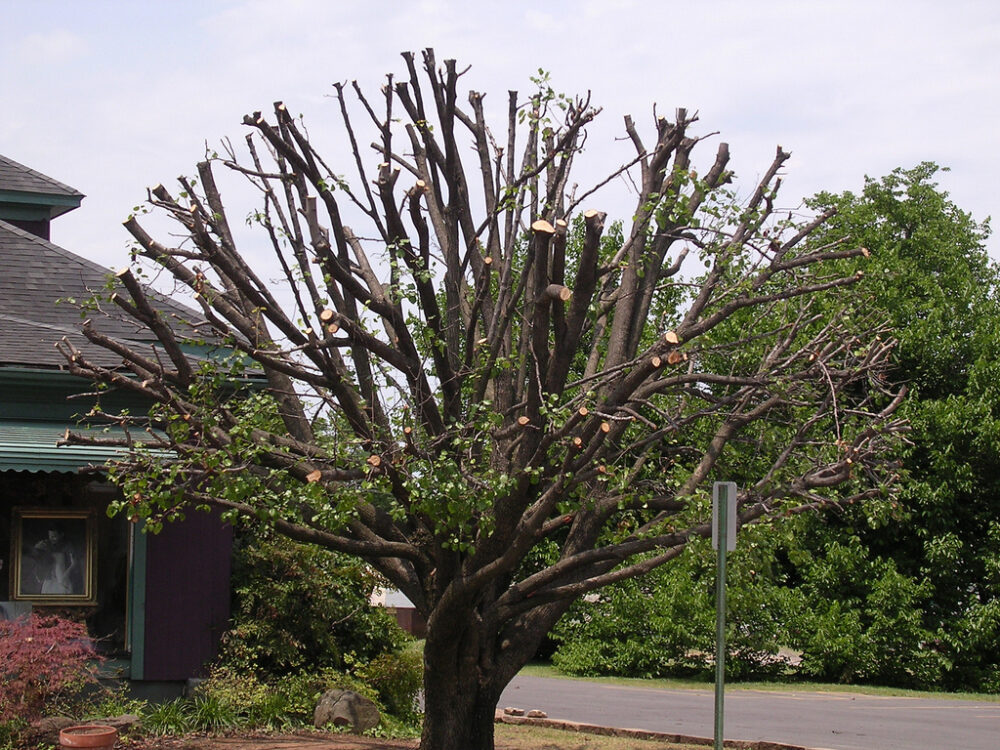Tree Topping: Good or Bad?
Is tree topping really a bad practice? In most cases, yes. However, in the hands of a professional Certified Arborist it can be an additional tool to extend the life cycle of certain Ornamental and understory trees. For example, Bradford Pears have a life expectancy of 15-20 years in North Texas. This short life span is generally caused by a very weak structure and included branching (low limbs growing from a localized point of the trunk). A very weak structure leaves the limbs susceptible to wind throw. As the tree gets older, limbs elongate growing longer catching more wind. With harsh weather events poor limb attachments result in large and small branches being torn out of the tree creating large exposed wounds in the tree’s tissue. Wounds leave the tree susceptible to insect/disease infestation ultimately leaving the tree hazardous due to weakness.

In this situation specifically, topping would be acceptable prior to any damage/risks for the following reasons: Topping/Shaping remove risk of breakage occurring, extending the life of the tree and lastly allows the tree to keep its Ornamental appearance.
There are several other cases where Ornamentals and understory trees can be implemented with success as well. Shade trees on the other hand are not recommended for topping. It is very harmful to the physical and structural character of the tree. This is why getting a Certified Arborist’s opinion is very important! Contact us today to learn more!
